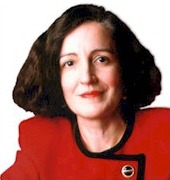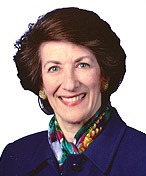Despite massive resistance from the broadcast industry, the Federal Communications Commission has issued a Report and Order creating a low power FM radio service.
Although it cited everything from the massive public demand to the First Amedment to diversity on the airwaves, the Commission was still divided on the issue, and victory was slim. The vote was 3-2 in favor of legalizing LPFM.
However, the new service is not perfect, and will not serve everyone it could have. The full regulations governing LPFM have yet to be completely written, but the general concept is now reality.
The first applications for LPFM stations might be taken as early as May; there will be a five-day filing window for the applications, and the FCC will give a 30-day notice before opening the application window.
Here are the essentials of the new low power FM radio service:
Who’s Eligible:
Non-profit educational entities and organizations providing public safety services (including local units of government). Schools, churches and other community-based organizations are the targets for LPFM.
The entire service will be non-commercial – advertisements will not be allowed, but underwriting and program sponsorship will be.
Two Classes of Stations – LP-100 and LP-10:
LP-100 stations will operate between 50 and 100 watts, with a maximum antenna height of 30 meters. This would provide a coverage radius of 3.5 miles (7 miles in diameter).
LP-10 stations will operate with between one and 10 watts, with a maximum antenna height of 30 meters. This would provide a coverage radius of 1-2 miles (2-4 miles in diameter).
The thousand-watt class of stations (LP-1000) was dropped because the FCC felt that “licensing stations of this size would not be in the public interest.”
LP-10 stations will NOT be allowed until after the initial round of LP-100 license applications have been submitted and processed. The intent is to fill the ‘largest gaps’ first with the most powerful LPFM stations, giving them the first crack to apply to serve a community.
If an LP-100 station simply is not possible in a given area, or nobody applies for one in an area where one may be possible, then LP-10 applications will be allowed. It would also seem that both classes station will be on ‘equal footing’ once the initial round of licensing has been conducted.
All LP stations will have a traditional call sign with ‘LP’ added to the end of it (WXXX-LP / KYYY-LP).
‘Modified Secondary-class’ Status:
LPFM stations will be considered secondary to all existing and future full-power FM stations. They must protect those stations from interference – but they also have to accept interference from full-power stations, both present and future.
LPFM stations must be spaced at least 20 kilometers away from any other radio station that there is a potential for interference with.
If an LPFM station is occupying a frequency where a full-power station wants to locate, the LPFM station will be bumped (to an alternate frequency or, in the worst-case scenario, off the air) in order to make room for the full-power one.
Interestingly, future digital television stations may interfere with some LPFM stations. In the event that a digital television station might interfere with an LPFM station, the LPFM station will be bumped – but FCC staff have given personal assurances to the Commission that it will do everything possible to find the LPFM station an alternate frequency so it can stay on the air.
Interference Protection Standards:
Third-adjacent channel interference protection has been dropped. Instead of the original proposal, which would have ‘peeled back the layers’ of the interference standards by two channels, only one layer of protection has been dropped.
For example, if a full power station is located at 95.1, there can be LPFMs as close by on the dial as 95.7 and 94.5 – under the unmodified rules, these channels couldn’t even be considered. However, if the original proposal had been approved, LPFM stations could have also been placed as nearby as 95.5 and 94.7 as well. Unfortunately “second-adjacent” channel stations will not be allowed.
The revised standards open up a handful of potential frequencies in some major markets, but the majority of LPFM channels will be available in medium to small-sized markets only, where the FM band is less crowded. The overall number of LPFM stations any community could have had has been reduced – no matter the market size.
“Going halfway” on the interference protection requirements is a hedge by the FCC in deference to the NAB’s concerns about interference to their full-power stations.
An FCC staffer, as she outlined the proposal, commented: “Our engineers are confident that 100 watt LPFM stations…will not impair the integrity of existing FM radio service, or impede the transition to digital radio service in the future.”
Ownership Restrictions:
No current radio station owner or anyone with broadcast interests can own an LPFM station.
During the first two years LPFM licenses will be available, only local entities will be permitted to hold a license. Licensees during this time must live within 10 miles of the station.
However, local chapters of national organizations (like the Lion’s Club, NORML, Lutheran Church, etc.) will be permitted to have their own stations, and it won’t be considered as “owned” by the national organization.
After two years, nobody can own more than one station in any given community. You will not see “clusters” of LPFM stations under one roof in a market like you do in the full-power station arena.
For the first two years of the LPFM service, only one station can be owned by one entity nationwide. In the third year, that cap jumps to five stations; after the first three years a maximum of 10 stations will be allowed nationally.
Character Qualifications:
The current (and nebulous) rules on FCC “character qualifications” remain in effect for LPFM station applicants and owners. This may prohibit some ‘pirate’ station operators from obtaining a low power radio license, unless they have shut their stations down once they had first contact with the FCC.
However, there are cases of past ‘pirates’ getting legal licenses by appealing the Commission’s denial – so don’t let this scare you too badly!
Applying for an LPFM License:
Details about the requirements for an LPFM station license remain sketchy and the application fee hasn’t been set, but the FCC will allow applications to be electronically filed.
If two applications are filed for the same frequency in a community, the FCC will not use auctions to determine who gets it. Instead, a ‘point system’ has been created to determine which applicant has the best potential to serve the community. The application who gets the most points wins. Points will be given out for applicants who:
–Have least two years of established community presence
–Propose longer broadcast hours (any station agreeing to operate a minimum of 12 hours a day will be awarded points toward a license)
–Propose lots of locally-originated programming (points will be awarded if an LPFM station promises eight or more hours of locally-originated programming per day
Applicants who lose in a competition, though, are not completely out of luck: The FCC will encourage the winning applicant to time-share their station with other interested parties, and may also limit the amount of license renewals one station may get in order to give a competing station a shot to broadcast in the future.
License Terms:
LPFM stations will be licensed for eight years, with a renewable option (see above).
LPFM stations must operate for a minimum of 36 hours per week.
Licenses may not be transferred between entities; if a station’s license runs out, or if a station can’t stay on the air for some reason, a new application will have to be filed for another station to take its place.
A political file must be maintained. The FCC’s current regulations on indecency and obscenity will apply for LPFM stations. The FCC’s rules on sponsorship identification will also apply for LPFM stations.
However, LPFM stations will not be required to keep a public file or send in yearly ownership reports, and will not have to abide by the Commission’s public inspection rules.
Emergency Alert System (EAS) Requirements:
LPFM stations will be required to monitor full-power stations that transmit emergency messages (tornado warnings, etc.), and they’ll have to pass those messages onto their listeners – but they will not have to buy the costly EAS equipment to encode the signals for transmission like full-power stations do.
While the National Association of Broadcasters hasn’t stopped LPFM from being approved by the Commission, this fight is far from over.
There is still a bill pending in the House of Representatives that would completely wipe out what the FCC has created so far, and stop it from ever bringing it up again.
The NAB has at least three dozen Representatives signed onto the bill, and will actively recruit more once Congress begins its work for this year. This still remains a real threat – until it is officially taken off the table, either by its sponsors or if it’s voted down.
Also, the NAB has several options open to it if it decides to appeal the FCC’s low power radio rule. It can file a Petition for Reconsideration with the Commission, forcing the FCC to give it one more shot at pleading its case against LPFM.
If this does not work, the NAB has already indicated it may file a lawsuit in Federal court to block the FCC from licensing any LPFM stations. Any of these activities could happen before the first tentative application window begins in May.
This is time for cautious celebration – the enemy still has many tricks up its sleeve it can use to stop LPFM from ever seeing the light of day.
And remember: If all the challenges are conquered, the restrictions on interference may prevent your community from getting its own LPFM station.
Not that this should stop you – the FCC was prepared to open up more frequencies on the FM band, but backed down. Not because the extra frequencies wouldn’t be viable – but because it had to offer an ‘olive branch’ to the radio industry.
The fight will continue, even after this is all ancient history. We have won a battle, but the war rages on.
IN FAVOR
Listen to Kennard’s Statement on LPFM (Real Audio, 8:07)
“I talked to a lot of people around the country and it became very clear to me that there was a lot of frustration…a lot of people wanted access to the airwaves, they had messages, they wanted to connect with their communities using the public’s airwaves – and they didn’t have the opportunity to do so.”
“It was a huge cross section of America. People from all walks of life, all sorts of different interests, churches, community groups, people in law enforcement, local governments…and all of these people wanted access to the airwaves.”
“This new service can serve as a forum for discussion of ideas and issues relevant to local communities. Some folks want to use low-power FM stations to provide job training opportunities for young people seeking careers in broadcasting … some want to emphasize cultural learning … others just want an outlet for expression for music and ideas that aren’t often heard in radio today.”
“Every day it seems like we read about more and more consolidation in the the broadcast area …what low-power FM radio will do is create an important new outlet and spark a whole new outlet for creativity and new ideas and new music that we don’t often hear on the radio.”
“I fundamentally do not think that it’s the business of the FCC to pick winners and losers in the marketplace. We should empower consumers to make those choices, to decide what they want to hear, what they don’t want to hear.”
“I’m skeptical when concerns like administrative expense and convenience are invoked to justify the exclusion of new competitors and new services from the marketplace. That’s like saying that were not going to issue any more drivers licenses because there are too many speeders on the road – it just doesn’t make sense.”
“I suspect that low-power FM has been subjected to as much testing and analysis and engineering as any broadcasting service that we’ve ever looked at. Remember, low-power FM is the FM service – something we know a lot about and we’ve studied extensively for many, many years.”
“Some of the studies cited in opposition to a low power FM service start with the premise that most existing FM radios do not provide adequate reception even today…and that we reject reception standards that over one-half billion radio sets now in use implicitly endorse.”
IN FAVOR
Listen to Tristani’s Statement on LPFM (Real Audio, 5:33)
“This is a great day for the American radio listening public.”
“The radio business has undergone a massive consolidation. Since the ’96 (Telecom) Act was passed the number of radio station owners has decreased about 12%, even though the total number of stations has actually increased by almost 4%. And pending mergers reduce the number of station owners even further.”
“I’ve grown increasingly concerned about the effect of consolidation on localism and the diversity of voices on the public airwaves. The new low-power radio service we are adopting is a partial antidote to the negative effects of consolidation…under the First Amendment, this is the best kind of response – the answer is more speech, not less.”
“The public response to the low-power radio proposal has been overwhelming. We’ve heard from thousands of individuals, schools, churches, and community groups and local government agencies that would like to use the public airwaves to serve their communities, but can’t under our existing rules. We’ve also heard from countless individuals who would like to hear more varied voices over the public airwaves.”
“Nothing we are adopting will jeopardize the technical integrity of the spectrum or to the transition to digital radio.”
IN FAVOR
Listen to Ness’s Statement on LPFM (Real Audio, 8:48)
“This is not a replica of a miniature full power station.”
OPPOSED
Listen to Furchtgott-Roth’s Statement on LPFM (Real Audio, 15:03)
“It is entirely irresponsible…(it will) harm the American listening public while producing very little in the way of countervailing benefits. This entire proceeding has been marked by a rush to judgment…(it does) not reflect the care that this agency has required for the introduction of new services.”
“Around the world today, groups – legitimate and illegitimate – have web sites on the Internet, they’re producing video and audio programming over the Internet.”
“There are costs…to the public perception of the quality of FM radio as a media service. Where will listeners go if there’s more interference? To other alternatives.”
“Pirate radio operators are out there. But these folks are not people who have been turned down for licenses by the Commission. I don’t have any expectation that this proceeding will lead to the diminution of the pirate problem that we have today.”
“I think this agency may potentially have a difficult time in explaining why someone operating at a hundred and one wants is subjected to one set of rules, while someone operating at a hundred watts is subjected to an entirely different set of rules.”
“In short, the Commission has abandoned our spectrum management policy – we will have more interference, we will have less efficient use of the spectrum, and who will lose? Radio listeners and the American public will lose.”
“I fear, at the end of the day, a lot of expectations have been raised-a lot of expectations that will not be met.”
OPPOSED (IN PART)
Listen to Powell’s Statement on LPFM (Real Audio, 7:52)
“To borrow and paraphrase from the medical profession’s teachings, we should do so first in a way that does no harm.”
“We regularly consider the economics of our actions on licensees…while (LPFM stations) will not be direct competitors for advertising dollars to existing commercial stations, they can threaten the economic health of the stations in meaningful ways. LPFM stations may very well siphon financial support away from small market stations; local support that is primary coming to existing stations in the form of advertising might migrate to one or more LPFM stations in the form of permissible underwriting or sponsorship.”
“Locally originated programming that we favor so often is expensive to produce compared to the scale efficiencies of syndicated or national programming. The erosion of economic return – even slight in small markets – may adversely impact the quantity and quality of local programming, which is unlikely to be replaced by my microstations operating under even greater economic constraints.”
“The threat of compromising the maxim of public interest, to my mind, should have compelled the Commission to fully consider the economic impacts of its decisions – and I’m at a loss to understand why it’s refused to do so.”
“I do believe it would be a perverse result if the consequence of introducing these new stations, for the promotion of individual voices and diversity, we end up compromising the viability of existing small market and minority and women-owned stations.”




